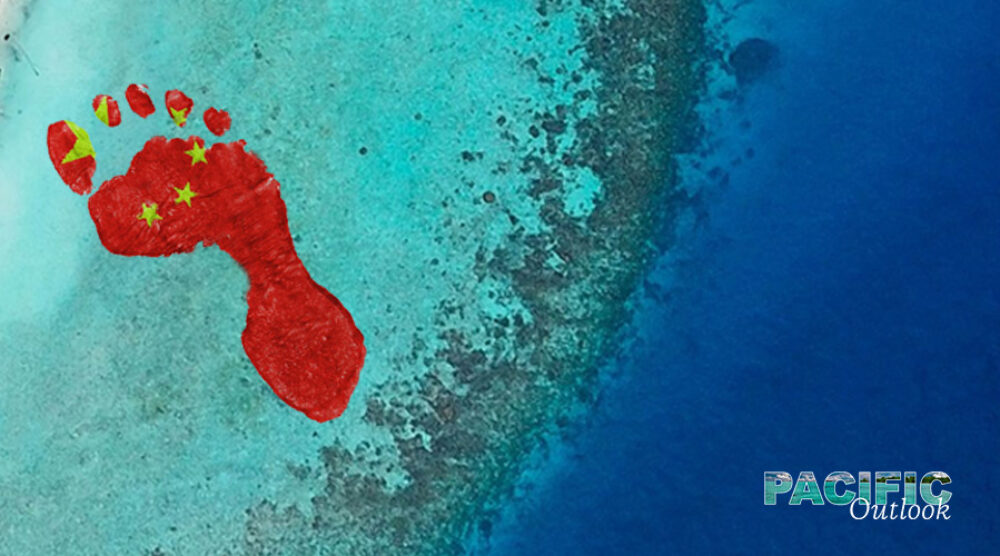China’s gigantic footprint in the Pacific is expected to grow in future, despite the impact of COVID-19 on its economy and the dent in its global standing due to various territorial disputes and the recent crackdown in Hong Kong.
These issues were at the center of discussions at a recent ‘China in the Pacific’ webinar organised by Georgetown University in conjunction with the University of Hawaii.
The panel included Dr Tarcisius Kabutaulaka, Director of the University of Hawaii’s Centre for Pacific Studies, Professor Terence Wesley-Smith from the University of Hawaii and Dr Graeme Smith, a fellow at the Australian National University (ANU).
While some panelists believe that China’s support is beneficial for a remote region with unique development challenges, others fear that the Pacific states could become pawns in Beijing’s longer-term geo-strategic ambitions.
China has over the years become a major aid donor, trade partner and source of investment in the region.
Pacific exports to China have increased from US$46m in 2005 to almost US$400m in 2017, according to analysis from the Development Policy Centre.
In response, traditional allies, such as Australia, New Zealand and the United States, have stepped up their engagement seeking to mitigate China’s influence.
The panelists considered numerous issues within the context of how Pacific island states engage with China
They agreed that China was here to stay and that people must ‘learn to live with it.’
Dr Kabutaulaka said since Pacific island countries want China to be part of the new regional order, they needed to know how to manage that relationship.
“For a lot of Pacific countries, the challenge is knowing which part of China, given the fact that China is dynamic and not homogenous, we are dealing with – whether it’s Beijing or with companies,” he said.
China’s concessional loans and grants in the region reached US$1.5 billion between 2006 and 2017, according to the Lowy Institute, making it the region’s third largest donor.
But there are concerns about the borrowing levels of island leaders amid rising debt in several countries, especially in light of the economic distress caused by Covid-19.
China’s lending style has been deemed as posing “clear risks” in the long-term, according to the Lowy Institute.
Chinese construction companies undertook work valued at US$958 million in the Pacific in 2017, according to China’s Ministry of Commerce.
The panelists said that these investments could grow given that China’s 10 Pacific allies had signed on to the US$1 trillion Belt and Road Initiative (BRI).
Three major Chinese companies are active in the region: the China Civil Engineering Construction Corporation (CCECC), the Shanghai Construction Group and the China Railway Group.
ANU’s Dr Smith believes these companies are expected to “carry the water for the Chinese state” in negotiations with Pacific leaders.
“CCECC basically fronted China in the Solomon Islands when they were trying to negotiate the switch [from Taiwan to China],” he said.
“They met with senior government people and offered them US$500m worth of grants and loans. In the end, that seemed to have been persuasive because Solomon Islands switched shortly afterwards.”
Aside from economics, China has political ambitions in the region.
Beijing views the region as a crucial source of votes at bodies like the United Nations, according to Professor Wesley-Smith.
He said the implications were played out at a July UN Human Rights Council vote on China’s new national security law in Hong Kong.
Papua New Guinea was one of the 53 countries that voted in favour of the new law, described as draconian and oppressive.
“Up until quite recently, Pacific delegations at the United Nations tended to vote pretty solidly along with western countries,” Professor Wesley-Smith said.
“There is the possibility that we are going to see an increasing divide in that bloc.”
Professor Wesley-Smith said that Pacific island countries were compelled into a balancing act to ensure their own development needs are addressed.
In particular, Pacific states recognise climate change as “the single greatest threat to the livelihoods, security and wellbeing” and want it emphasised in global discussions.
As the region’s dominant donor, Australia’s Pacific ‘Step Up’ has been the most pronounced effort to counter China’s increased presence in the Pacific.
It includes a US$2bn infrastructure development financing facility, funding the US$144m Coral Sea Cable System in the Solomon Islands and the construction of the Blackrock military base in Fiji.
New Zealand has also launched its ‘Pacific Reset’ and the United States has the ‘Pacific Pledge.’
These initiatives have been welcomed by Dr Tabukaulaka.
However, he believes that the western powers’ exclusion of the Pacific from various mappings of the region – for example, the Indo-Pacific – will continue to push it closer towards China.
“There is a need for genuinely respecting the sovereignty of PICs in our engagement not only with China but with other parts of the world as well,” he said.
These issues and more will form the backdrop of regional geopolitics and how Pacific leaders negotiate their relationships with foreign powers, including China, in the COVID-19 era and beyond.
AUTHOR
Former Fiji Sun deputy managing editor business and senior news journalist Sheldon Chanel is a freelance journalist based in Suva. Sheldon writes for the Guardian Pacific and is the consulting editor for the University of the South Pacific’s journalism student newspaper, Wansolwara.
The Pacific Outlook series is an initiative of the Pacific Hub.








